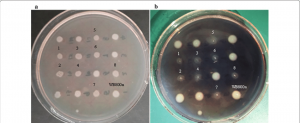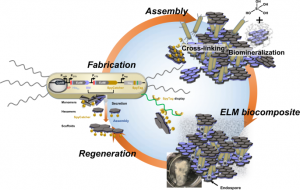Bacillus subtilis Recombinants
Abstract
Homologous recombination plays a critical role in maintaining gene diversification and genome stability. Fourteen Bacillus subtilis recombinants gene products have been genetically characterized and classified into five different epistatic groups. At least seven other recombination genes could be predicted. Recombination gene products defining activities that help RecA process DNA repair and recombination have been studied, but those that process recombination intermediates into products (post-synaptic stage) await elucidation.

Properties
Quality level: 100
Storage temperature: −20°C
General description
Peptidoglycan is a biopolymer that is a major component of the cell walls of Gram-positive bacteria. Peptidoglycan consists of a carbohydrate backbone of alternating N-acetylglucosamine and N-acetylmuramic acid units and is modified with D- and L-amino acids. N-acetylmuramic acid residues crosslink oligopeptides. The terminal peptide is D-alanine although other amino acids are present as D-isomers.

Request
- Peptidoglycan can be used for the estimation of the activity of lytic enzymes (eg, lyticase). It is recommended to use a peptidoglycan concentration of 0.15-3 μg/ml in water or buffer and measure at 450 nm. Peptidoglycan is not soluble but produces a suspension in water.
- Peptidoglycan activates the Toll-like receptor 2 (TLR2), present in mammalian cells for the stimulation of lymphocytes. It can also function as a Poly (I: C) antagonist.
Packaging
Bottomless glass bottle. The content is inside the inserted merged cone.

